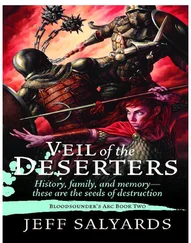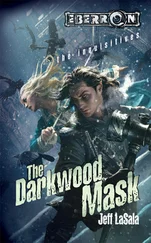Jeff Molofee - NeHe's OpenGL Tutorials
Здесь есть возможность читать онлайн «Jeff Molofee - NeHe's OpenGL Tutorials» весь текст электронной книги совершенно бесплатно (целиком полную версию без сокращений). В некоторых случаях можно слушать аудио, скачать через торрент в формате fb2 и присутствует краткое содержание. Жанр: Программирование, на английском языке. Описание произведения, (предисловие) а так же отзывы посетителей доступны на портале библиотеки ЛибКат.
- Название:NeHe's OpenGL Tutorials
- Автор:
- Жанр:
- Год:неизвестен
- ISBN:нет данных
- Рейтинг книги:3 / 5. Голосов: 1
-
Избранное:Добавить в избранное
- Отзывы:
-
Ваша оценка:
- 60
- 1
- 2
- 3
- 4
- 5
NeHe's OpenGL Tutorials: краткое содержание, описание и аннотация
Предлагаем к чтению аннотацию, описание, краткое содержание или предисловие (зависит от того, что написал сам автор книги «NeHe's OpenGL Tutorials»). Если вы не нашли необходимую информацию о книге — напишите в комментариях, мы постараемся отыскать её.
NeHe's OpenGL Tutorials — читать онлайн бесплатно полную книгу (весь текст) целиком
Ниже представлен текст книги, разбитый по страницам. Система сохранения места последней прочитанной страницы, позволяет с удобством читать онлайн бесплатно книгу «NeHe's OpenGL Tutorials», без необходимости каждый раз заново искать на чём Вы остановились. Поставьте закладку, и сможете в любой момент перейти на страницу, на которой закончили чтение.
Интервал:
Закладка:
Lesson 01
Welcome to my OpenGL tutorials. I am an average guy with a passion for OpenGL! The first time I heard about OpenGL was back when 3Dfx released their Hardware accelerated OpenGL driver for the Voodoo 1 card. Immediately I knew OpenGL was something I had to learn. Unfortunately, it was very hard to find any information about OpenGL in books or on the net. I spent hours trying to make code work and even more time begging people for help in email and on IRC. I found that those people that understood OpenGL considered themselves elite, and had no interest in sharing their knowledge. VERY frustrating!
I created this web site so that people interested in learning OpenGL would have a place to come if they needed help. In each of my tutorials I try to explain, in as much detail as humanly possible, what each line of code is doing. I try to keep my code simple (no MFC code to learn)! An absolute newbie to both Visual C++ and OpenGL should be able to go through the code, and have a pretty good idea of what's going on. My site is just one of many sites offering OpenGL tutorials. If you're a hardcore OpenGL programmer, my site may be too simplistic, but if you're just starting out, I feel my site has a lot to offer!
This tutorial was completely rewritten January 2000. This tutorial will teach you how to set up an OpenGL window. The window can be windowed or fullscreen, any size you want, any resolution you want, and any color depth you want. The code is very flexible and can be used for all your OpenGL projects. All my tutorials will be based on this code! I wrote the code to be flexible, and powerful at the same time. All errors are reported. There should be no memory leaks, and the code is easy to read and easy to modify. Thanks to Fredric Echols for his modifications to the code!
I'll start this tutorial by jumping right into the code. The first thing you will have to do is build a project in Visual C++. If you don't know how to do that, you should not be learning OpenGL, you should be learning Visual C++. The downloadable code is Visual C++ 6.0 code. Some versions of VC++ require that bool is changed to BOOL, true is changed to TRUE, and false is changed to FALSE. By making the changes mentioned, I have been able to compile the code on Visual C++ 4.0 and 5.0 with no other problems.
After you have created a new Win32 Application (NOT a console application) in Visual C++, you will need to link the OpenGL libraries. In Visual C++ go to Project, Settings, and then click on the LINK tab. Under "Object/Library Modules" at the beginning of the line (before kernel32.lib) add OpenGL32.lib GLu32.lib and GLaux.lib. Once you've done this click on OK. You're now ready to write an OpenGL Windows program.
The first 4 lines include the header files for each library we are using. The lines look like this:
#include // Header File For Windows
#include // Header File For The OpenGL32 Library
#include // Header File For The GLu32 Library
#include // Header File For The GLaux Library
Next you need to set up all the variables you plan to use in your program. This program will create a blank OpenGL window, so we won't need to set up a lot of variables just yet. The few variables that we do set up are very important, and will be used in just about every OpenGL program you write using this code.
The first line sets up a Rendering Context. Every OpenGL program is linked to a Rendering Context. A Rendering Context is what links OpenGL calls to the Device Context. The OpenGL Rendering Context is defined as hRC. In order for your program to draw to a Window you need to create a Device Context, this is done in the second line. The Windows Device Context is defined as hDC. The DC connects the Window to the GDI (Graphics Device Interface). The RC connects OpenGL to the DC.
In the third line the variable hWnd will hold the handle assigned to our window by Windows, and finally, the fourth line creates an Instance (occurrence) for our program.
HGLRC hRC=NULL; // Permanent Rendering Context
HDC hDC=NULL; // Private GDI Device Context
HWND hWnd=NULL; // Holds Our Window Handle
HINSTANCE hInstance; // Holds The Instance Of The Application
The first line below sets up an array that we will use to monitor key presses on the keyboard. There are many ways to watch for key presses on the keyboard, but this is the way I do it. It's reliable, and it can handle more than one key being pressed at a time.
The active variable will be used to tell our program whether or not our Window has been minimized to the taskbar or not. If the Window has been minimized we can do anything from suspend the code to exit the program. I like to suspend the program. That way it won't keep running in the background when it's minimized.
The variable fullscreen is fairly obvious. If our program is running in fullscreen mode, fullscreen will be TRUE, if our program is running in Windowed mode, fullscreen will be FALSE. It's important to make this global so that each procedure knows if the program is running in fullscreen mode or not.
bool keys[256]; // Array Used For The Keyboard Routine
bool active=TRUE; // Window Active Flag Set To TRUE By Default
bool fullscreen=TRUE; // Fullscreen Flag Set To Fullscreen Mode By Default
Now we have to define WndProc(). The reason we have to do this is because CreateGLWindow() has a reference to WndProc() but WndProc() comes after CreateGLWindow(). In C if we want to access a procedure or section of code that comes after the section of code we are currently in we have to declare the section of code we wish to access at the top of our program. So in the following line we define WndProc() so that CreateGLWindow() can make reference to WndProc().
LRESULT CALLBACK WndProc(HWND, UINT, WPARAM, LPARAM); // Declaration For WndProc
The job of the next section of code is to resize the OpenGL scene whenever the window (assuming you are using a Window rather than fullscreen mode) has been resized. Even if you are not able to resize the window (for example, you're in fullscreen mode), this routine will still be called at least once when the program is first run to set up our perspective view. The OpenGL scene will be resized based on the width and height of the window it's being displayed in.
GLvoid ReSizeGLScene(GLsizei width, GLsizei height) // Resize And Initialize The GL Window
{
if (height==0) // Prevent A Divide By Zero By
{
height=1; // Making Height Equal One
}
glViewport(0, 0, width, height); // Reset The Current Viewport
The following lines set the screen up for a perspective view. Meaning things in the distance get smaller. This creates a realistic looking scene. The perspective is calculated with a 45 degree viewing angle based on the windows width and height. The 0.1f, 100.0f is the starting point and ending point for how deep we can draw into the screen.
glMatrixMode(GL_PROJECTION) indicates that the next 2 lines of code will affect the projection matrix. The perspective matrix is responsible for adding perspective to our scene. glLoadIdentity() is similar to a reset. It restores the selected matrix to it's original state. After glLoadIdentity() has been called we set up our perspective view for the scene. glMatrixMode(GL_MODELVIEW) indicates that any new transformations will affect the modelview matrix. The modelview matrix is where our object information is stored. Lastly we reset the modelview matrix. Don't worry if you don't understand this stuff, I will be explaining it all in later tutorials. Just know that it HAS to be done if you want a nice perspective scene.
Читать дальшеИнтервал:
Закладка:
Похожие книги на «NeHe's OpenGL Tutorials»
Представляем Вашему вниманию похожие книги на «NeHe's OpenGL Tutorials» списком для выбора. Мы отобрали схожую по названию и смыслу литературу в надежде предоставить читателям больше вариантов отыскать новые, интересные, ещё непрочитанные произведения.
Обсуждение, отзывы о книге «NeHe's OpenGL Tutorials» и просто собственные мнения читателей. Оставьте ваши комментарии, напишите, что Вы думаете о произведении, его смысле или главных героях. Укажите что конкретно понравилось, а что нет, и почему Вы так считаете.








